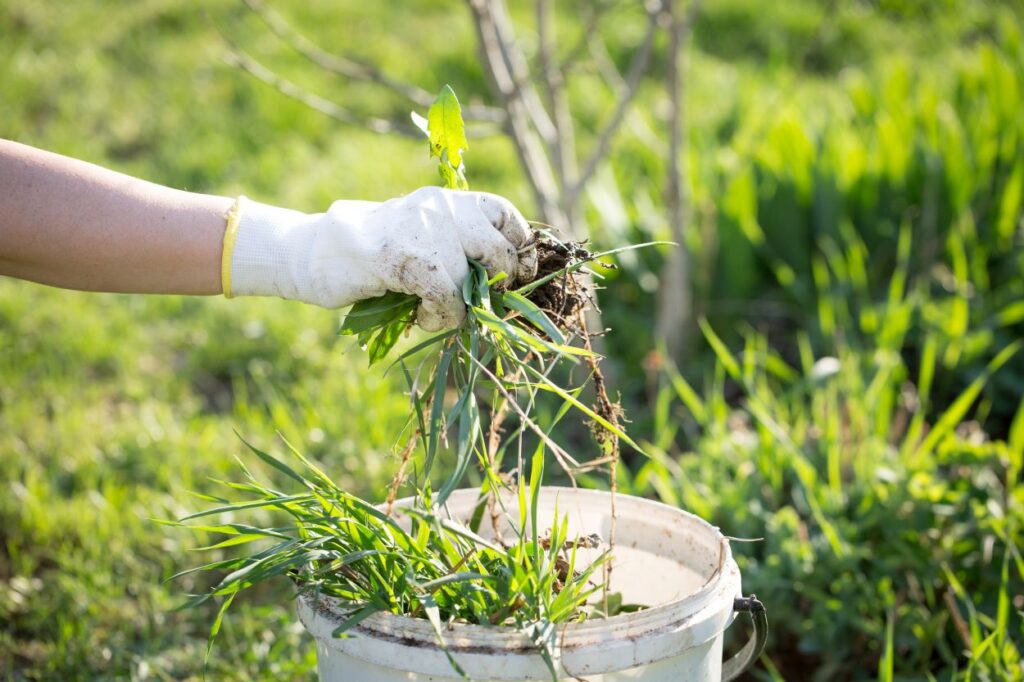Spring heralds the transition from a dormant landscape back to a riot of color and activity. Unfortunately, this rejuvenation is not selective in what it brings back to life. In gardens and lawns across the country, the first warm days of spring also trigger an explosion of weeds.
For gardening enthusiasts, the arrival of spring is a call to arms against these pesky interlopers. But the battle is best fought with knowledge, preparation, and a strategic plan. This guide will walk you through the most common spring weeds, how to identify them, and the best strategies for early control that will set the stage for a thriving garden and lawn through to summer and beyond.
The Crucial Importance of Early Weed Identification
Early spring is the ideal time to take action against weeds. At this point, many weeds are at the seedling stage, allowing you to get ahead of their rapid growth. By identifying these intruders early, you can prevent them from competing with your garden plants.
Why is Early Identification Important?
Weeds are the bane of any gardener. Left unchecked, they can overrun a garden, compete with plants for nutrients, and wreak havoc on a carefully cultivated landscape. When you nip them in the bud, quite literally, you minimize the effort needed to maintain your garden throughout the growing season.
Common Weeds That Emerge in Spring
Understanding the specific weeds that emerge in your area is a critical first step to effective management. Here, we highlight some of the most common and problematic spring weeds you may encounter in Utah.
Dandelions (Taraxacum officinale)
The bane of many a suburbanite, the dandelion is recognizable by its bright yellow flowers that swiftly turn into the telltale puffballs dispersing seeds across the lawn. While they’re a valuable early-season nectar source for pollinators, their aggressive taproots make them tenacious growers.
Clover (Trifolium)
Don’t be fooled by the sweet appearance of clover. Its fast-growing nature and adaptability make it a formidable foe in the garden. Clover positively thrives in nitrogen-poor conditions, often improving soil health for itself at the expense of more delicate garden plants.
Black Medic (Medicago lupulina)
A sprawling, low-growing annual, black medic can quickly form dense mats, smothering the grass you’ve worked hard to maintain. Its yellow flower heads, resembling clover, are a giveaway.
Oxalis (Oxalis stricta)
Also known as ‘sourgrass,’ oxalis is not just a flavor in your local smoothie shop. These weeds with their delicate-looking shamrock-shaped leaves and yellow flowers can quickly overtake a garden.
Dock (Rumex)
A large-leaved perennial weed, dock stands out for the waxy hue of its plantain-like leaves. Its strong taproot makes it a tough plant to pull up.
Mallow (Malva)
Distinct for its clusters of purple flowers with five flat petals, mallow spreads rapidly and has a unique central stem pattern that makes pulling out the entire plant a chore.
Groundsel (Senecio vulgaris)
These seeds germinate quickly and are an annual weed that has a rather inconspicuous appearance, with small green flowers that quickly turn to seed heads, ready to spread.
Pineappleweed (Matricaria discoidea)
Common in neglected or disturbed ground, this weed derives its name from the pleasant pineapple scent the flowers give off when crushed. Pineappleweed grows in dense patches and is often found along pathways.
Visual Identification Tips for Common Lawn Weeds
Each weed has a unique appearance that can aid in prompt identification and differentiation. Here are some visual cues to help you spot and name the weeds in your garden.
Leaf Shape and Arrangement
The type of leaves can often be the most recognizable feature. For instance, the broad leaves of dandelions or the clover’s trefoil leaves stand in stark contrast to the needle-like leaves of grasses.
Flower Characteristics
Flower appearance can also be used to identify weeds. The bright yellow blossoms of dandelions or the small, trifoliate rose-purple flowers of oxalis are distinctive and typical of many spring weeds.
Growth Patterns
Notice the way a weed grows. Does it sprawl along the ground, standing upright, or tend to climb and spread out? Understanding growth patterns can help you anticipate how they will compete with your garden plants.
Preventive Measures Against Spring’s Ambitious Weeds
An ounce of prevention is worth a pound of cure, and nowhere is this more true than battling spring weeds.
Mulching
Mulch is aesthetically pleasing and suppresses weed growth by denying seeds light and reducing the space where annuals can take root.
Proper Watering and Soil Health
Healthy garden plants will naturally outcompete the weeds. Ensure proper watering and soil health to give your plants an advantage.
Timing
Ensure that you’re ready for the ‘green wave’ that comes with the first warm days of spring. Have your gardening tools and preventive strategies in place and be ready to act quickly.
Organic Weed Control Methods to Employ
Perhaps you prefer to avoid chemical inputs in your garden. Luckily there are several organic methods to control weeds effectively.
Hand-Pulling
It’s not the most glamorous work, but sometimes the oldest methods are the best. Pulling weeds by hand is effective and allows you to remove the entire plant, root and all.
Vinegar Spray
A high-acidic vinegar spray can effectively kill weeds. Be cautious though, as it’s a non-selective method that can also harm your wanted plants.
Corn Gluten Meal
Considered a pre-emergent herbicide, corn gluten meal suppresses the growth of roots in newly germinating plants, effectively stopping spring weeds in their tracks.
If these methods don’t cut it, use the specially formulated solutions offered by Lawngevity; you can apply them yourself or sign up for our lawn care services for routine application and maintenance.
Managing Weeds to Ensure Your Garden’s Success
The effort you put into managing weeds in the spring sets the stage for the health and vibrancy of your garden through the growing season. Be proactive, be observant, and be thorough in your approach. Your garden will thank you with a rich and colorful bounty come summer.


